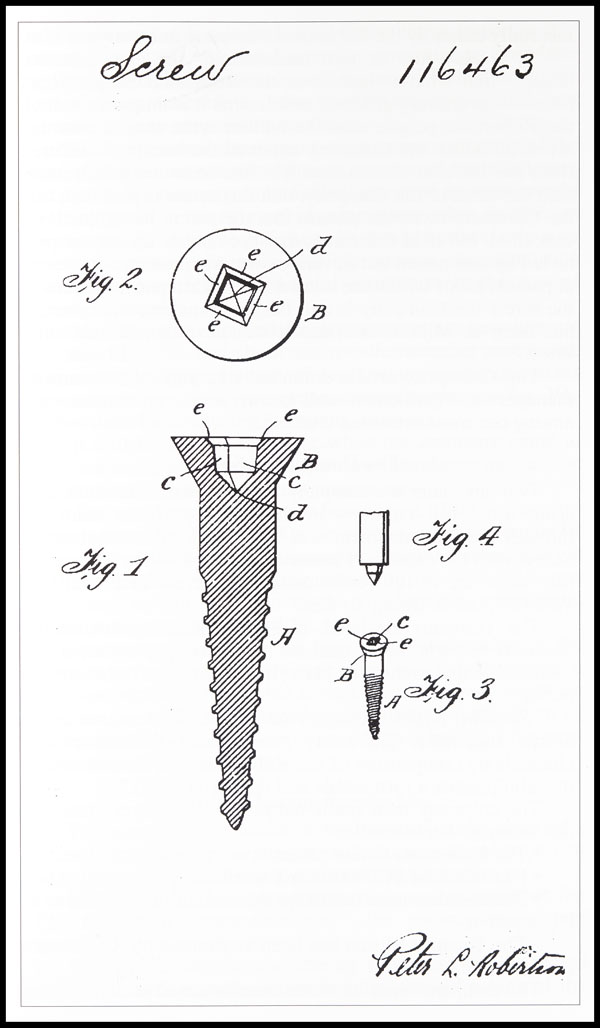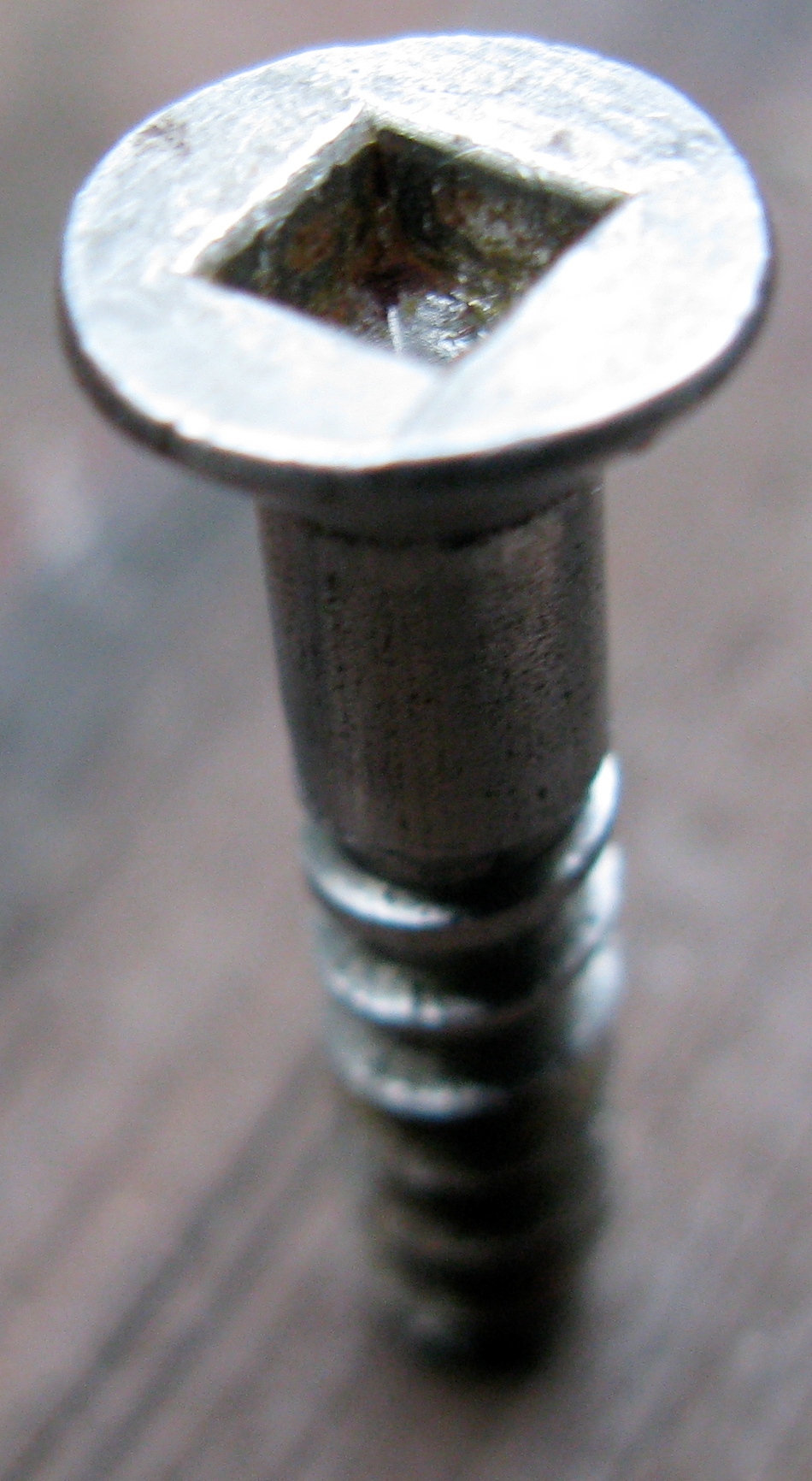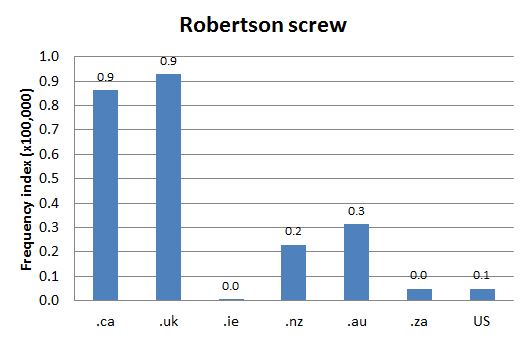DCHP-2
Robertson screw screw with Robertson head, Robertson DCHP-2 (July 2016)
n. — proprietary, Industry
a screw with a tapered, square-shaped socket.
Type: 1. Origin — The Canadian inventor Peter Lymburner Robertson patented both the Robertson screw and driver in 1909 after he invented them in Milton, Ontario, in 1908. Though other square socket screws and drivers existed at the time, Robertson's design had a tapered socket, which allowed the screws to be manufactured easily and cheaply by cold forming (stamping) the heads of the screws. The Robertson screw has several advantages (see the 2000 quotation) but its use is limited outside of Canada due to Robertson's unwillingness to share control over production designs with other manufacturing companies after an unsuccessful venture with a British manufacturer (see the 2001 quotation). In 1968, the Robertson company was purchased by an American conglomerate (see Rybczynski 2000: 80-86.) Certain areas, e.g. in construction (softwood lumber), use Robertson screws almost exclusively for the superior hold they offer over other designs such as Phillips screws, while minimizing the risk of screw head damage.
Chart 1 shows that the term is most common in Canada and the UK and more common in other Commonwealth countries than in the US, which is Canada's biggest trading partner (2016), where the frequency is low.
See also ITP Nelson, s.v. "Robertson".References:
Images:

Image 1: An illustration from the Robertson screw Canadian patent from 1909. Source: Collections Canada.
Image 2: A Robertson screw in wood. Source: Wikimedia Commons. Photo: Saforrest
Chart 1: Internet Domain Search, 7 Jul. 2016
